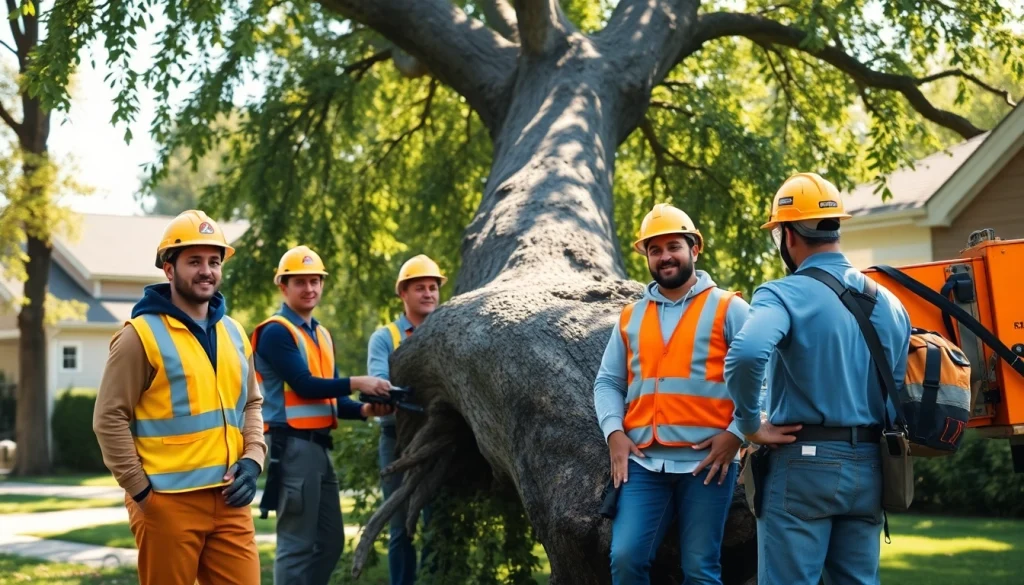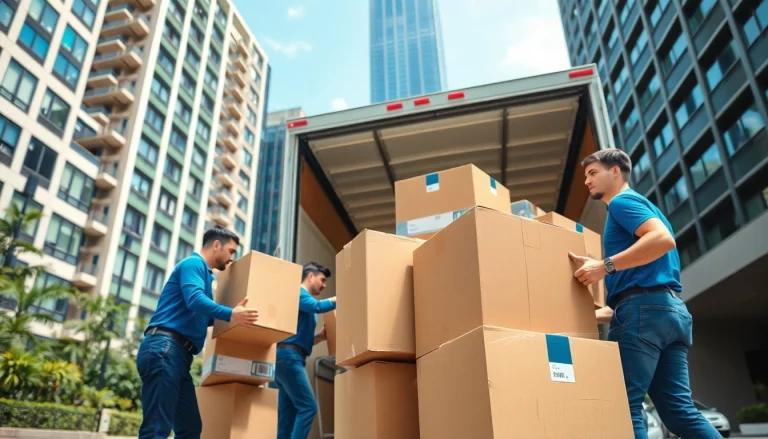
Understanding Emergency Tree Service
What is Emergency Tree Service?
Emergency tree service is a specialized area of tree care that focuses on addressing urgent situations involving trees. It typically involves immediate action when trees pose risks to life and property, especially after severe weather events like storms, high winds, or heavy snowfall. These services are crucial for mitigating hazards such as falling branches, uprooted trees, or compromised tree health, which can lead to catastrophic damages. If you find yourself in need, seeking out emergency tree service can provide quick assistance and solutions tailored to your specific circumstances.
Common Situations Requiring Emergency Services
Various situations can necessitate emergency tree service. Some of the most common scenarios include:
- Storm Damage: After a storm, trees may suffer from broken branches or may be uprooted entirely, creating immediate safety hazards.
- Insect Infestation: Certain pests can damage trees rapidly, making it necessary to remove affected trees to prevent the spread to healthy ones.
- Diseased Trees: Trees that are severely diseased can become unstable and may need urgent removal to protect surrounding vegetation and structures.
- Overgrown Limbs: Limbs that encroach on buildings, power lines, or walkways can pose a risk; emergency services can address these concerns promptly.
- Vehicle Accidents: In instances where cars collide with trees, damage often requires immediate cleanup and tree assessment to ensure safety.
Signs That Your Trees Need Immediate Attention
Identifying Hazardous Trees
Hazardous trees can pose significant risks if left unchecked. Here are some signs to look for:
- Cracked Trunks: Visible cracks in the trunk may indicate tree instability.
- Dead Branches: Branches that have no leaves in the growing season can signify a serious health issue.
- Decay or Fungus: Soft wood or fungal growths suggest internal decay, which can weaken the tree.
- Leaning Trees: A tree that has suddenly started to lean could be on the verge of falling.
Assessing Damage After a Storm
After severe weather, it’s critical to assess tree damage carefully. Start by looking for broken limbs, downed trees, or signs of structural failure. Check if the roots have been exposed or if there are cracks in the trunk and assess whether the tree leans toward buildings or pathways, indicating a potential risk. It’s advisable to consult an expert for a thorough inspection, as they can provide an informed assessment of the safety of your trees.
Recognizing the Need for Tree Removal
In some instances, tree removal becomes the most viable option. This may be necessary when:
- The tree is diseased beyond recovery.
- The root system is compromised, threatening stability.
- The tree harbors pests that could spread to other plants.
- It obstructs new construction or landscaping plans.
It’s essential to rely on professionals who can evaluate the overall health of the tree and recommend appropriate actions. Tree removal is typically performed when a tree poses an undeniable threat, ensuring property safety and that of the surrounding environment.
Steps to Take When You Need Emergency Tree Service
Assessing the Damage
The first step to take when facing a tree emergency is assessing the situation. Look for any potential dangers, such as broken branches that might fall, trees leaning dangerously close to buildings or power lines, and loose debris that could pose a risk to passersby. It’s important to gather as much information as possible before contacting a service provider, as this will help them understand the urgency and nature of the situation.
Contacting a Tree Care Professional
Once you’ve assessed the damage, the next step is to contact a qualified tree care professional. It’s crucial to choose an emergency tree service with the following characteristics:
- Fully licensed and insured.
- Available 24/7 for emergency situations.
- Positive customer reviews and recommendations.
- Expertise in different types of tree services, including removal and trimming.
- Transparent pricing with no hidden fees.
Safety Measures to Implement
While waiting for assistance, take any necessary safety measures. This includes:
- Marking off dangerous areas with cones or caution tape.
- Avoiding proximity to damaged trees or branches.
- Contacting your utility company if lines are down.
- Ensuring that children and pets remain at a safe distance.
Taking proactive measures can prevent additional injuries and facilitate a more effective response by the emergency team.
What to Expect from Your Emergency Tree Service Provider
Initial Consultation and Assessment
When an emergency tree service provider arrives, the first step will usually be a thorough assessment of the situation. They will evaluate the condition of the trees, the surrounding area, and any other elements involved in the emergency. The goal at this stage is to gather information necessary for making informed decisions about tree care and removal.
Cost Estimates and Insurance Considerations
Your tree service provider should provide a cost estimate after the assessment. Be sure to discuss any costs related to cleanup, removal, and disposal of debris. If you have homeowners’ insurance, inquire about whether your policy covers tree removal due to storm damage. Having a clear understanding of costs upfront can help prevent unexpected financial burdens post-service.
Post-Service Cleanup and Follow-Up
After the service is complete, a reputable emergency tree service will ensure that your property is left safe and clean. This includes removing any fallen debris, ensuring no hazardous materials remain, and potentially addressing any further care needs for surviving trees on your property. It’s advisable to schedule a follow-up consultation to discuss any ongoing care your trees may need to prevent future emergencies.
Best Practices for Preventing Tree Emergencies
Regular Tree Maintenance Tips
Regular maintenance goes a long way in preventing tree-related emergencies. Here are some best practices to adopt:
- Pruning: Regularly prune trees to remove dead or diseased branches, promoting healthy growth.
- Watering: Ensure your trees are adequately watered, especially during dry spells.
- Mulching: Apply mulch around the base of trees to retain moisture and suppress weeds.
- Professional Inspections: Schedule routine inspections by a certified arborist to identify potential issues before they become emergencies.
Seasonal Precautions and Inspections
Different seasons present unique challenges for tree health. During spring, inspect trees for diseases; in summer, watch for insect infestations; in fall, prepare trees for winter weather by pruning; and in winter, regularly check for heavy snow or ice accumulation. Adopting a seasonal care routine aids in maintaining tree vitality and resilience against adverse conditions.
Choosing the Right Trees for Your Property
Choosing trees that suit your landscape and local climate can dramatically reduce the likelihood of emergencies. Factors to consider include:
- Growth Habit: Select trees with root systems compatible with your property.
- Resistance to Pests: Choose species known for their resilience against local pests and diseases.
- Size and Spread: Ensure trees fit within the space available without overly encroaching on structures or utilities.
Consulting local horticultural experts can provide valuable insights into the best tree species for your area and specific property conditions.






